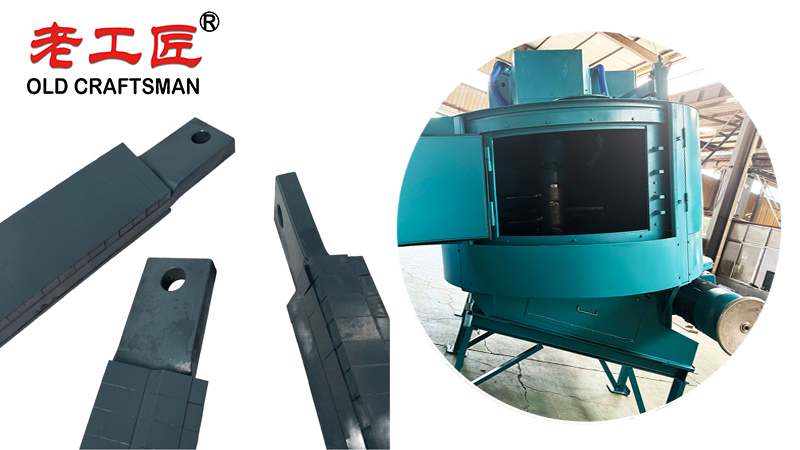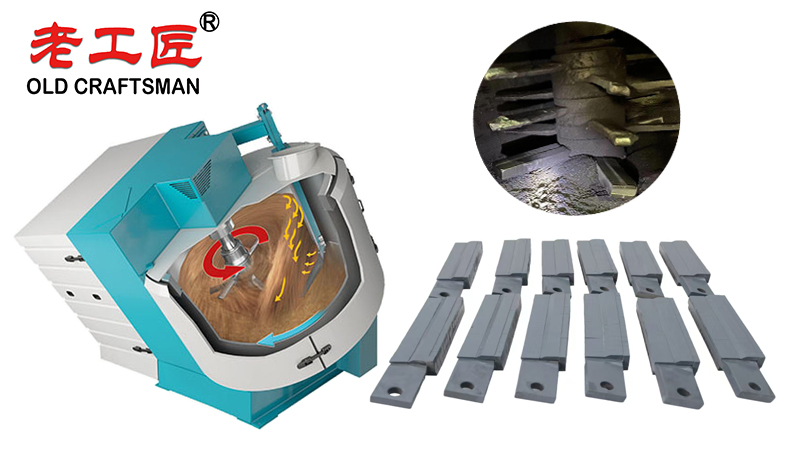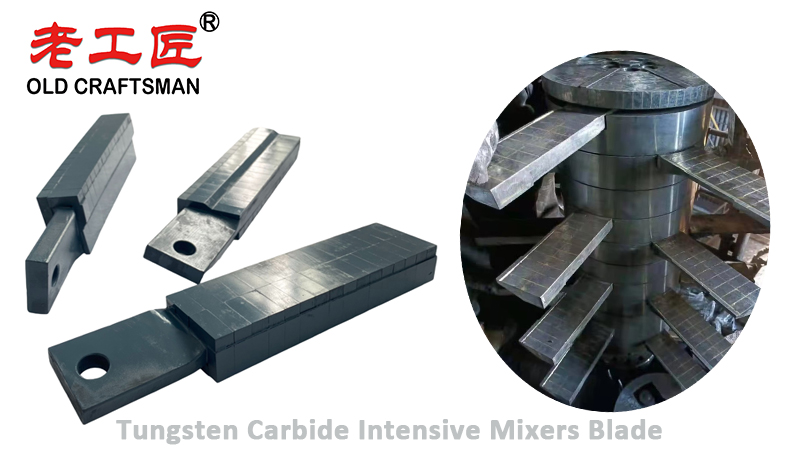In industrial mixing and compounding, particularly for high-viscosity materials like rubber, plastics, ceramics, and specialty chemicals, the intensive mixer (often known as an internal mixer or ZZ Old Craftsman® mixers blade) is a workhorse. At the heart of this machine’s performance is its rotor blade. While traditionally made from hardened steel, the adoption of tungsten carbide (WC) surfacing or tipping on these blades has become a critical advancement, dramatically impacting efficiency, cost, and product quality.

The importance of tungsten carbide blades can be broken down into several key areas:
1. Extreme Wear Resistance and Extended Service Life
This is the most significant advantage. Intensive mixers process abrasive fillers like:
- Carbon black (a key ingredient in tires and rubber products)
- Silica
- Mineral fillers (clay, talc, calcium carbonate)
- Glass fibers
These materials act like sandpaper, rapidly eroding standard steel rotors.
- Tungsten Carbide: Is one of the hardest materials available, second only to diamond. Its hardness (~70-90 HRC) is vastly superior to hardened tool steel (~60-65 HRC). A tungsten carbide-coated blade can last 5 to 10 times longer than a standard steel blade before requiring maintenance or replacement.
- Result: Dramatically reduced downtime for rotor changes and rebuilds, leading to higher overall equipment availability and production output.
2. Maintenance of Precise Clearances and Mixing Efficiency
The performance of an intensive mixer depends on the precise gap between the rotor tip and the mixer chamber wall. This shear gap is crucial for generating the intense shear forces needed for proper dispersion, distribution, and homogenization of ingredients.
- Steel Blades: Wear down quickly, increasing this gap. A larger gap reduces shear forces, leading to:
- Longer mixing cycles to achieve the same dispersion quality.
- Inconsistent batch-to-batch quality.
- Potential for agglomerates and poorly dispersed filler.
- Tungsten Carbide Blades: Their superior wear resistance means the critical shear gap remains consistent for thousands of mixing cycles.
- Result: Consistent, predictable, and efficient mixing from the first batch to the thousandth. This ensures every batch meets the precise specification for viscosity, dispersion, and final product performance.

3. Enhanced Corrosion and Chemical Resistance
Many compounds involve aggressive chemical environments from oils, plasticizers, acids, and other additives that can cause pitting and corrosive wear on steel blades.
- Tungsten Carbide: Offers excellent resistance to a wide range of chemicals, protecting the blade from corrosive degradation that can accelerate mechanical wear.
- Result: The blade’s integrity is maintained longer, even when processing chemically challenging formulations, further extending its service life.
4. Improved Product Quality and Consistency
Because tungsten carbide blades maintain their geometry and the machine’s designed shear parameters, they produce a superior and consistent product.
- Better Dispersion: Consistent high shear ensures fillers like carbon black are broken down and dispersed evenly throughout the polymer matrix. This is critical for properties like tensile strength, abrasion resistance (in tires), and electrical conductivity.
- Reduced Contamination: While steel blades wear, they introduce fine iron particles into the mix. This metallic contamination can be disastrous for products where purity is essential (e.g., medical devices, certain electronics). Tungsten carbide’s wear resistance virtually eliminates this source of contamination.
- Result: Higher-quality end-products with superior mechanical properties and fewer defects.
5. Long-Term Cost Savings (Lower Total Cost of Ownership)
While the initial investment in tungsten carbide-tipped rotors is significantly higher than standard steel rotors, the Total Cost of Ownership (TCO) is far lower.
- Reduced Replacement Costs: Fewer rotor purchases over the life of the mixer.
- Reduced Downtime Costs: Less frequent shutdowns for maintenance translate into massive savings in lost production time.
- Reduced Labor Costs: Less time spent by maintenance teams on difficult and time-consuming rotor changes.
- Reduced Energy Costs: A worn steel blade leads to longer mix times to achieve dispersion, consuming more energy. Efficient mixing with tungsten carbide blades can optimize energy use.

How They Are Applied: Tipping vs. Coating
It’s important to note that entire blades are rarely made from solid tungsten carbide due to cost and brittleness. Instead, the material is applied to the high-wear areas:
- Tungsten Carbide Tipping: Blocks or rods of tungsten carbide are welded (brazed) onto the leading edges and tips of the steel rotor wings. This is the most common and robust method.
- Thermal Spray Coatings: A layer of tungsten carbide powder can be thermally sprayed onto the rotor surface. This is effective but generally not as wear-resistant as solid tipping for the most severe applications.
In intensive mixers, carbide-intensive high-performance carbide powders are widely used for manufacturing wear-resistant blades and cutting tools that must withstand extremely high temperatures and severe abrasive wear. These blades, often made from abrasion-resistant stainless steel or high-carbon-content carbon steel, experience complex forces acting on their surfaces as abrasive particles slide across them during operation. The primary types of wear include abrasive wear, surface fatigue, and adhesive wear, with abrasive wear being the dominant mechanism when processing highly abrasive materials. Compared to mild steel, wear-resistant materials with optimized carbon content and hard carbide phases (such as tungsten carbide) exhibit significantly improved mechanical properties and service life. Proper selection of the manufacturing process — including powder metallurgy, sintering, and surface coating — is critical to maximizing resistance against both abrasion and surface fatigue under the harsh conditions found in high-shear mixing applications. (Wikipedia, the free encyclopedia)
Conclusion
The tungsten carbide blade is not just an incremental improvement but a transformative component for intensive mixers. It shifts the focus from frequent maintenance and variable quality to reliability, consistency, and peak performance. By combating the primary enemies of wear and corrosion, it ensures that the mixer operates as intended by its designers, batch after batch. For any operation where mixer uptime, product quality, and total cost are paramount, investing in tungsten carbide rotor technology is a strategic decision that delivers a compelling return on investment.
“Zhuzhou Old Craftsman Precision Alloy Co., Ltd. could make tungsten carbide wear parts and make your equipment use life is tens of times longer than before! We specialize in providing customized carbide wear products solutions to meet the demanding requirements of industries such as aerospace, automotive, mining, and precision machining.”
Belt scraper Brazing brazingprocess CARBDIE HAMMER carbide Carbide belt scraper carbidebrazing carbide hammer Crusher CRUSHER HAMMER Informational Internal stress metal mining Refractory Brick Mold Secondary belt cleaner scraper stresses VSI crusher wear plates welding